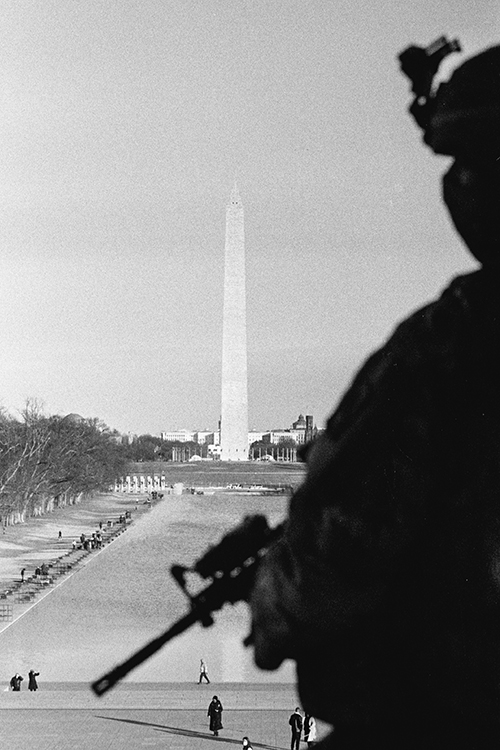|
San Francisco Film And Photo League
The San Francisco Film and Photo League was one of the associated groups of the Workers Film and Photo League. Active from 1933 to 1934, the San Francisco General Strike ended their activity in 1934, with the disappearance of equipment and films during vigilante raids associated with the strike. Members of the San Francisco Film and Photo League were Lester Balog, Otto Hagel and Hansel Mieth. The one extant film produced by the group is "Century of Progress." References American artist groups and collectives Social documentary photography Social documentary photography Photography Photography is the visual art, art, application, and practice of creating durable images by recording light, either electronically by means of an image sensor, or chemically by means of a light-sensitive material such as photographic film. It i ... Arts organizations based in the San Francisco Bay Area 1933 establishments in California {{film-org-stub ... [...More Info...] [...Related Items...] OR: [Wikipedia] [Google] [Baidu] |
Lester Balog
Lester Balog (April 18, 1905 – February 1976) was a labor activist and founding member of the Workers' Film & Photo League. Born in Hungary, he immigrated to the United States in the early 1920s. A soccer player in Budapest, after immigrating to the U.S. with his family as a teen, he joined the Labor Sports Union in New York. From there, he got involved with other Workers' organizations. In 1925, after mainstream media photographers were beaten during the Passaic Textile Strike in Passaic, New Jersey, he took up a camera to document the strike and the brutality of police toward the strikers. He became a "worker filmmaker" who helped to make the film, Passaic Textile Strike, one of the earliest surviving films about workers' struggles in the United States. In 1926, at the age of 21, and one year from an engineering degree, Balog left Cooper Union in New York City to join the workers' movement. He designed banners and posters for political events, and continued to photogr ... [...More Info...] [...Related Items...] OR: [Wikipedia] [Google] [Baidu] |
Workers Film And Photo League
The Workers Film and Photo League was an organization of filmmakers, photographers, writers and projectionists in the 1930s, dedicated to using film and photography for social change. History Founded in 1930, the WFPL produced documentaries of the U.S. labor movement including the National Hunger marches of 1931 and 1932 and the Bonus March 1932. These newsreels were generally not distributed to mainstream theaters, but shown at party or trade union events. When shown in theaters, they often opened for films produced in Europe or the Soviet Union. In New York, the "Harry Alan Potamkin Film School" was established by the Workers Film and Photo League to train working-class filmmakers. Initially affiliated with the Workers International Relief, the group first organized to project films at fundraising events for striking workers. Although the best known chapter of the WFPL was in New York, groups in Los Angeles, Chicago, Detroit, and other cities created and screened documen ... [...More Info...] [...Related Items...] OR: [Wikipedia] [Google] [Baidu] |
San Francisco General Strike
The 1934 West Coast Waterfront Strike (also known as the 1934 West Coast Longshoremen's Strike, as well as a number of variations on these names) lasted 83 days, and began on May 9, 1934 when longshoremen in every US West Coast port walked out. Organized by the International Longshore and Warehouse Union (ILWU), the strike peaked with the death of two workers on "Bloody Thursday" and the San Francisco General Strike which stopped all work in the major port city for four days and led ultimately to the settlement of the West Coast Longshoremen's Strike. The result of the strike was the unionization of all of the West Coast ports of the United States. The San Francisco General Strike of 1934, along with the Toledo Auto-Lite Strike of 1934 led by the American Workers Party and the Minneapolis Teamsters Strike of 1934 led by the Communist League of America, were catalysts for the rise of industrial unionism in the 1930s, much of which was organized through the Congress of Industri ... [...More Info...] [...Related Items...] OR: [Wikipedia] [Google] [Baidu] |
Otto Hagel
Otto Hagel (1909–1973) was a German-born American photographer and filmmaker. He and his wife Hansel Mieth were part of the school of socially conscious documentary photo-journalists that included Dorothea Lange, Imogen Cunningham, Peter Stackpole and Robert Capa. In the early 1930s, Hagel was a member of the San Francisco Film and Photo League. Hagel's photographs of waterfront workers are the basis of two books published by the West Coast ILWU: ''Men and Ships: A Pictorial of the Maritime Industry'' (1937); and ''Men and Machines: A Story About Longshoring on the West Coast Waterfront'' (1963). Hagel and Mieth photographed the inside of the Heart Mountain Japanese American internment camp for ''Life'' magazine in 1943, but the photographs were not published by ''Life'', In the 1950s, the couple was blacklisted for refusing to testify before the House Un-American Activities Committee. Hagel and Meith bought a working ranch in Santa Rosa, California in 1941, and raised chick ... [...More Info...] [...Related Items...] OR: [Wikipedia] [Google] [Baidu] |
Hansel Mieth
Hansel Mieth (1909–1998) was a German-born photojournalist who worked on the staff of LIFE Magazine. She was best known for her social commentary photography which recorded the lives of working class Americans in the 1930s and 1940s. Biography She was born Johanna Mieth in Oppelsbohm, Germany, one of three daughters of a strict, religious family. She ran away from home at the age of 15 and did factory work before emigrating to the United States in 1930 to join her lover and fellow photographer Otto Hagel (1909–1973). The couple found themselves in the midst of the Great Depression and worked as migrant farm labourers for several years. During that time they began to photograph the brutal working conditions and suffering they saw around them, after acquiring a second-hand Leica camera. In San Francisco, Sacramento, and in the rural towns they worked in, they photographed the bitter labour strikes and the working homeless. They were involved with the San Francisco Film and ... [...More Info...] [...Related Items...] OR: [Wikipedia] [Google] [Baidu] |
American Artist Groups And Collectives
American(s) may refer to: * American, something of, from, or related to the United States of America, commonly known as the "United States" or "America" ** Americans, citizens and nationals of the United States of America ** American ancestry, people who self-identify their ancestry as "American" ** American English, the set of varieties of the English language native to the United States ** Native Americans in the United States, indigenous peoples of the United States * American, something of, from, or related to the Americas, also known as "America" ** Indigenous peoples of the Americas * American (word), for analysis and history of the meanings in various contexts Organizations * American Airlines, U.S.-based airline headquartered in Fort Worth, Texas * American Athletic Conference, an American college athletic conference * American Recordings (record label), a record label previously known as Def American * American University, in Washington, D.C. Sports teams Soccer * ... [...More Info...] [...Related Items...] OR: [Wikipedia] [Google] [Baidu] |
Photojournalism Organizations
Photojournalism is journalism that uses images to tell a news story. It usually only refers to still images, but can also refer to video used in broadcast journalism. Photojournalism is distinguished from other close branches of photography (such as documentary photography, social documentary photography, war photography, street photography and celebrity photography) by having a rigid ethical framework which demands an honest but impartial approach that tells a story in strictly journalistic terms. Photojournalists contribute to the news media, and help communities connect with one other. They must be well-informed and knowledgeable, and are able to deliver news in a creative manner that is both informative and entertaining. Similar to a writer, a photojournalist is a reporter, but they must often make decisions instantly and carry photographic equipment, often while exposed to significant obstacles, among them immediate physical danger, bad weather, large crowds, and limited phy ... [...More Info...] [...Related Items...] OR: [Wikipedia] [Google] [Baidu] |
Social Documentary Photography
Social documentary photography or concerned photography is the recording of what the world looks like, with a social and/or environmental focus. It is a form of documentary photography, with the aim to draw the public's attention to ongoing social issues. It may also refer to a socially critical genre of photography dedicated to showing the life of underprivileged or disadvantaged people. Origin of social documentary photography Social documentary photography has its roots in the 19th Century work of Henry Mayhew, Jacob Riis, and Lewis Hine, but began to take further form through the photographic practice of the Farm Security Administration (FSA) in the USA. The FSA hired photographers and writers to report and document the plight of poor farmers. Under Roy Stryker, the Information Division of the FSA adopted a goal of "introducing America to Americans." Many noted Depression-era photographers were fostered by the FSA project, including Walker Evans, Dorothea Lange, and G ... [...More Info...] [...Related Items...] OR: [Wikipedia] [Google] [Baidu] |
Arts Organizations Based In The San Francisco Bay Area
The arts are a very wide range of human practices of creative expression, storytelling and cultural participation. They encompass multiple diverse and plural modes of thinking, doing and being, in an extremely broad range of media. Both highly dynamic and a characteristically constant feature of human life, they have developed into innovative, stylized and sometimes intricate forms. This is often achieved through sustained and deliberate study, training and/or theorizing within a particular tradition, across generations and even between civilizations. The arts are a vehicle through which human beings cultivate distinct social, cultural and individual identities, while transmitting values, impressions, judgments, ideas, visions, spiritual meanings, patterns of life and experiences across time and space. Prominent examples of the arts include: * visual arts (including architecture, ceramics, drawing, filmmaking, painting, photography, and sculpting), * literary arts (includ ... [...More Info...] [...Related Items...] OR: [Wikipedia] [Google] [Baidu] |


